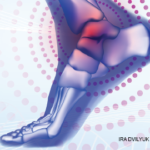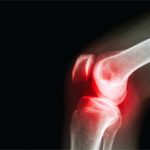If one of the tires on your car were wearing out faster than the others, would it make sense to continue driving on it until it wore out completely, replace it, and begin the process again? You would certainly want to find out why the wear is happening so quickly and fix the cause. And, if your mechanic didn’t have the answer, you would find one who did. However, people who have OA in weight-bearing joints must accept this approach as the norm, because in medicine at present, there is no mechanic offering a different option.
I was originally trained as a foot and ankle surgeon. I feel that replacing an artificial joint without understanding the mechanisms of joint deterioration is incomplete at best—as incomplete and unacceptable as thinking that the only alternative to osteoarthritis is to medicate its associated symptoms. My background in surgery and experience in prolonging joint replacements led to my initial change in thinking regarding the true etiology of OA of the weight-bearing joints. Let’s look at the two most common factors identified with OA: age and weight.
Age and Weight
The one single factor consistently associated with the cause of OA is age. Like gray hair and wrinkles, OA is something you can count on having if you live long enough. The eventual development of OA almost seems inevitable because, given enough time, friction can destroy almost anything. Assuming that age is the primary cause of arthritis, however, is like assuming that age causes heart disease because many older people have heart problems. You didn’t get heart disease from the potato chip you ate when you were 73 years old. There is a logical error here that involves something we are all familiar with: the difference between a correlation and a cause. For both heart disease and OA, I believe the pathological process actually begins in childhood, taking years before symptoms develop and confirming diagnostic tests are available. At that point in OA, extensive joint damage may have already occurred.
In almost all instances of OA of the knees or hips, one joint is symptomatic first—sometimes it’s the only joint ever involved. Because we know that one knee or hip joint isn’t younger than the other, this situation raises some important questions. If age is the primary cause of OA, why do some 90-year-olds have no arthritis in their knees, while some individuals who much younger have severe arthritic changes in these joints?

